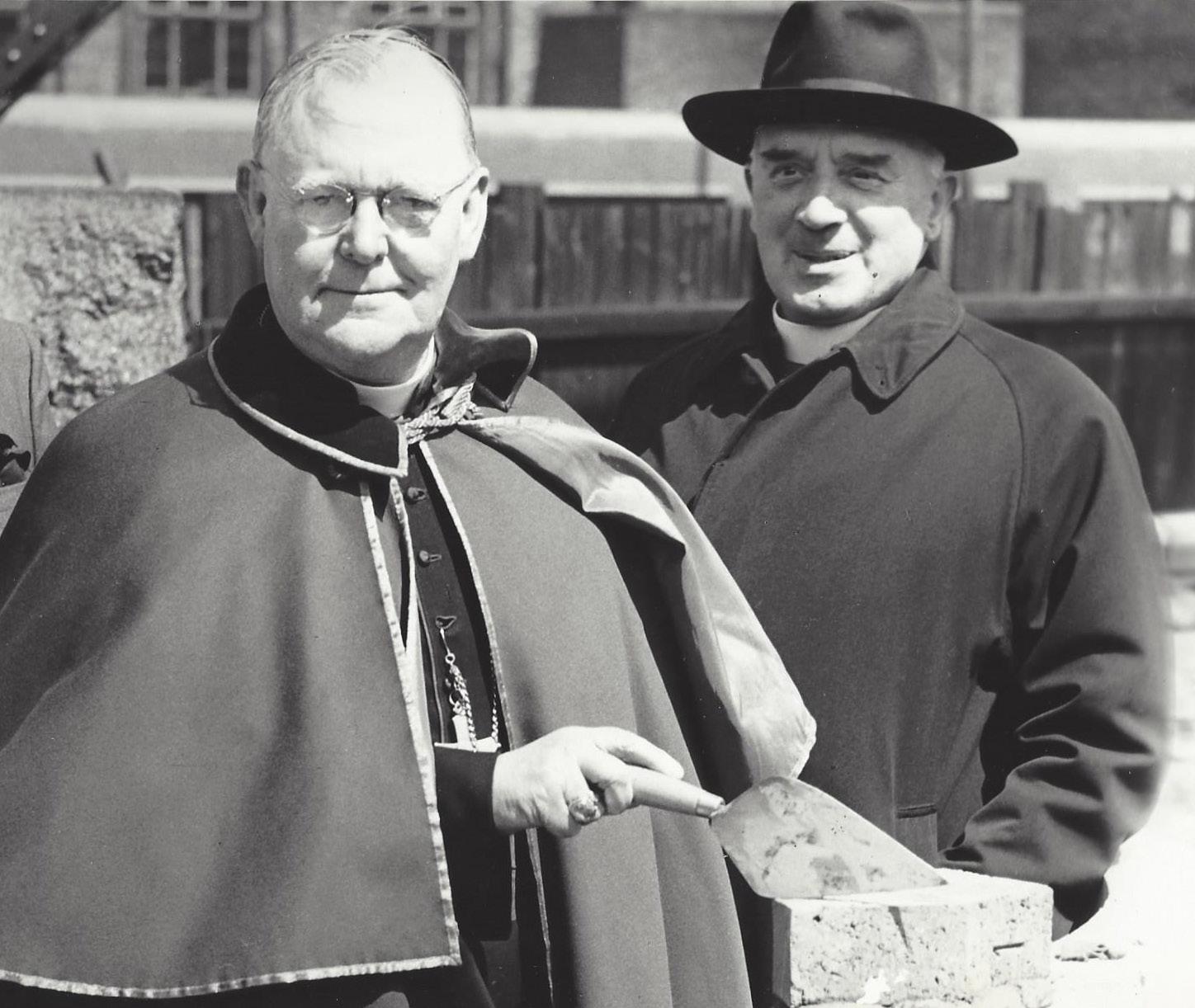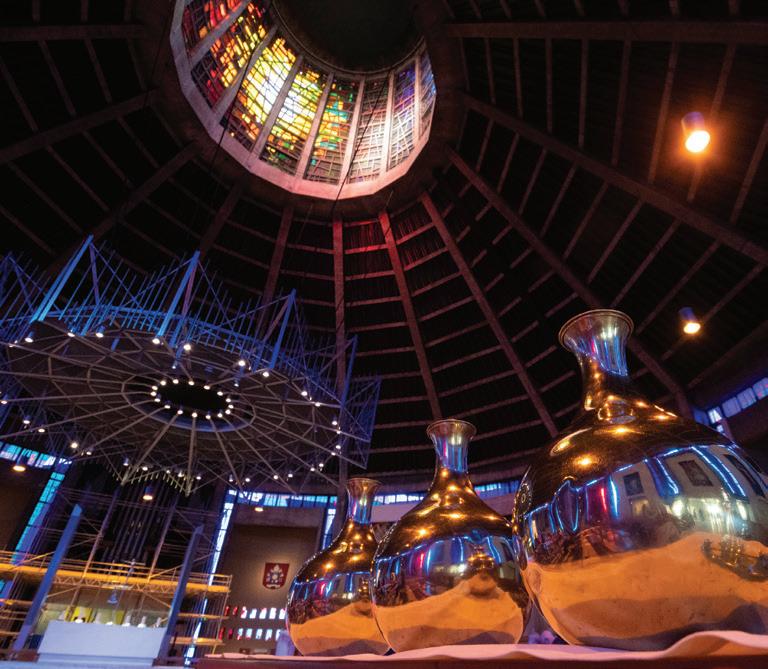
3 minute read
from the archives The Privilege of Priesthood
by Neil Sayer, Archdiocesan Archivist
Father James Hopkins hurried to make an addition to the baptism register. As Parish Priest of St John’s, Kirkdale, in 1953, he was aware of the local pride in having produced more priests than any other parish in the country.
Advertisement
At this time there were 28 living priests from the parish, including a bishop. Now, under the entry ‘William Godfrey, baptised 6th October 1889’, he added the note ‘Archbishop of Liverpool’. Archbishop William Godfrey was the first Liverpool-born Archbishop of his own city. This year marks 70 years since his appointment, and 60 years since his death.
Archbishop Godfrey’s father George, a haulage contractor, died shortly before his son’s birth. William Godfrey was born, baptised and confirmed in St John’s parish, served there as an altar boy and went to the parish school. He was educated for the priesthood at Ushaw College, Durham, and the Venerable English College, Rome, and was ordained in Rome in 1916. He spent two years as a curate at St Michael’s in Liverpool before returning to Ushaw to teach in 1919. As a young professor he wrote a handbook for the guidance of new priests called ‘The Young Apostle’. In 1930 his scholarly abilities were recognised when he was called to Rome to become Rector of the English College and Domestic Chaplain to Pope Pius XI. He was appointed Apostolic Delegate to Great Britain, Malta and Gibraltar in 1938, becoming the first Papal Delegate to live in this country since the sixteenth century. This post meant he was the spiritual liaison officer between our bishops and the Pope. Then, at the age of 64, he was surprised to learn that Pope Pius XII had appointed him as Archbishop of Liverpool, following the death of Archbishop Downey. The late Archbishop’s
Secretary, Monsignor Cyril Taylor, welcomed his appointment, noting that he was ‘well known both to the priests and the people in Liverpool and throughout the Archdiocese.’ A proud Lancastrian, with a red rose forming part of his episcopal coat of arms, he had attended three Preston Guilds, and was an official representative at the ceremony of the laying of the foundation stone for the Lutyens Cathedral in 1933 and for Archbishop Downey’s funeral. He frequently visited his mother after she moved to Great Crosby, celebrating the silver jubilee of his priesthood at St Peter and St Paul’s church there. His brother still lived in the family home and was on hand to greet the new Archbishop when he arrived at Lime Street station to take over his new role. The Archbishop’s niece went on to teach at Bellerive Convent School in Princes Park, Liverpool.
In some ways he seemed an odd choice as Archbishop, though that might only be in contrast to his forceful, media-savvy predecessor. Parishioners of St Michael’s, the only parish where he served as priest, remembered him as a ‘quiet, retiring curate’. ‘Saintly’ was one description of him, and ‘gentle and kind to all’ was another’s recollection. One newspaper profile of him noted his ‘homely and benign Lancashire air’. A former student at Rome, Monsignor Thomas McKenna, later became the new Archbishop’s Secretary. He remembered him as Rector at the English College, ‘A certain shyness and reserve hid from us as students a wit and lightness of spirit which was an essential part of his character.’ Perhaps it was that wit, deployed in amusing anecdotes displaying a talent for mimicry, combined with a paternal concern for people and an extraordinary memory for names and faces, that enabled him to be so successful in his various roles.
‘My life has come full circle’, he said at his enthronement as Archbishop. Yet he had still further to go. He administered England’s biggest diocese – more than 660 priests, 263 churches and 430,000 laity – for only 3 years. During that time he decided to abandon the original plan for the Cathedral, and asked Adrian Gilbert Scott to prepare a ‘reduced version’ of the Lutyens design, which was intended to be cheaper and quicker to build. In 1956 he was translated upwards (some would say) to Westminster. Around 25,000 people lined the streets of Liverpool to say farewell as he was driven to Lime Street station. As head of the Roman Catholic Church in England and Wales, he was made a Cardinal in 1958, thus becoming the first (but certainly not the last) Liverpool-born Cardinal. Father Edward Neary, another of his students in Rome, thought that ‘One could never imagine him in any other walk of life but the priesthood. For some it may seem to be a sacrifice – for the Cardinal it was always evidently a privilege.’ He died on 22 January 1963 and is buried in Westminster Cathedral.











